How to cover the lining inside the house in the country?
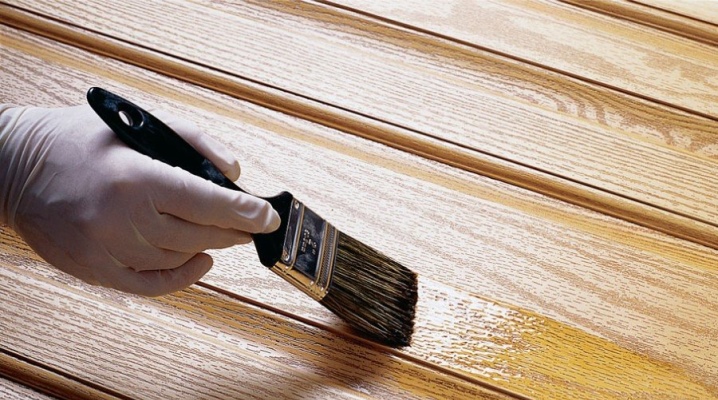
Lining is a popular facing material that is affordable and attractive in appearance. He is often referred to when decorating various surfaces in wooden houses. With clapboard, interiors invariably take on a more comfortable and attractive look. Today we will understand what coatings it is worth treating the lining in the conditions of a country house.
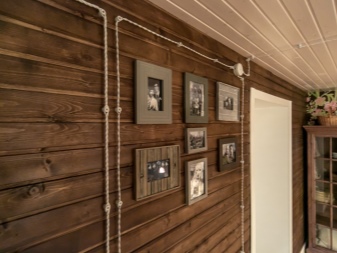
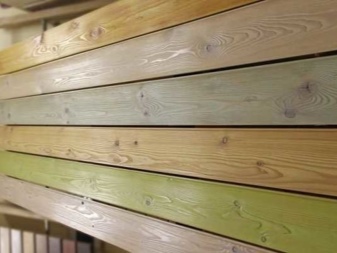
Why is impregnation needed?
Some owners of private houses do not see the point in treating the surface of the lining with impregnations. In fact, if the thin boards are not covered with anything, after a certain period of time, not very good changes will appear on them. If there is insufficient ventilation, the fit will be covered with a kind of blue, and if it is intensely influenced by the aggressive sun, then it can turn dark gray.
The blue on the lining is due to the action of microorganisms, which can be eliminated with the help of special oxidants, for example, chlorine.
The procedure will not be the easiest and fastest, it will be accompanied by characteristic unpleasant odors.
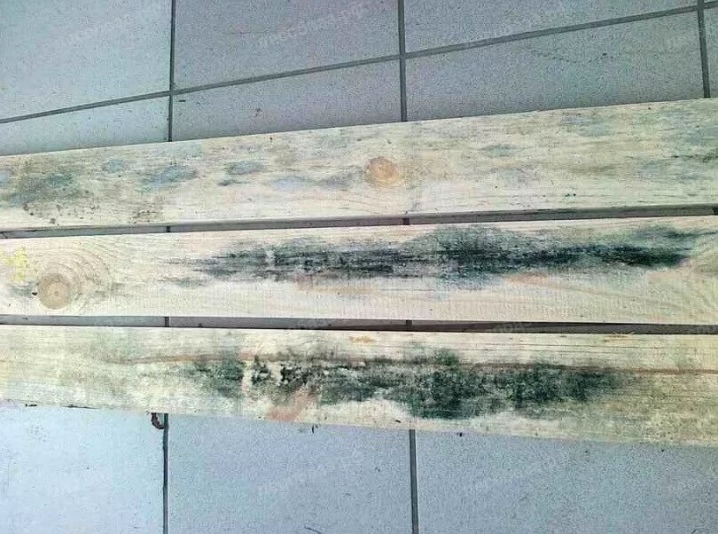
If a grayish bloom has appeared on the lining from exposure to sunlight, then it will be possible to get rid of it by turning to mechanical grinding. But the positive effect of these procedures is unlikely to last for a long time. It is more expedient to resort to processing the finishing material immediately after its installation. In this case, problems can be avoided in the future.
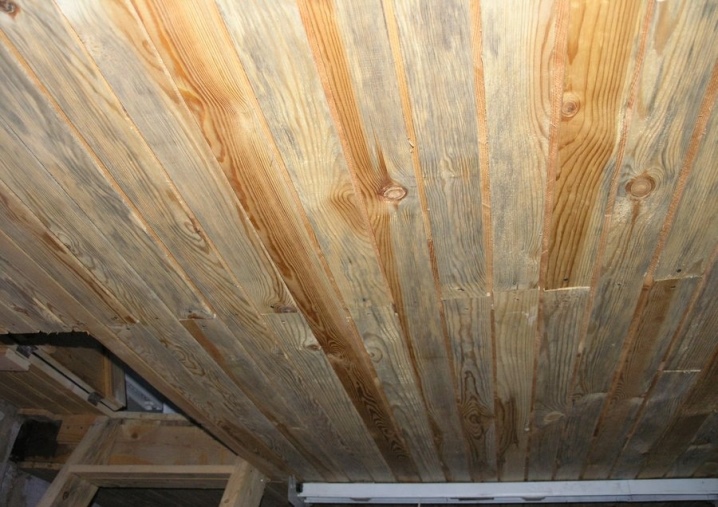
Impregnations suitable for lining not only protect it from negative external factors, but also make it more attractive aesthetically. With this addition, the interior looks nicer, more accurate.
Lining, on which there is a waterproof treatment, will last much longer, even if it is in a damp or irregularly heated room.
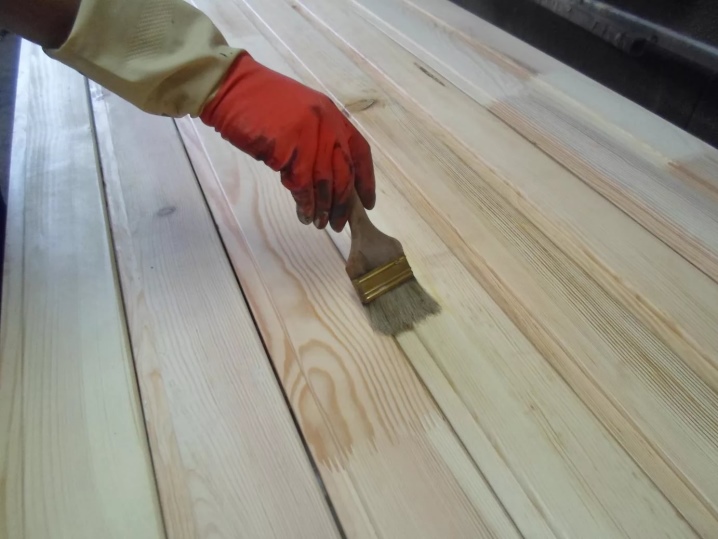
Varieties of compositions
In specialized stores, you can find many different products that are ideal for processing lining inside a country house. Each composition has its own characteristics and characteristics. Let's get acquainted with them.
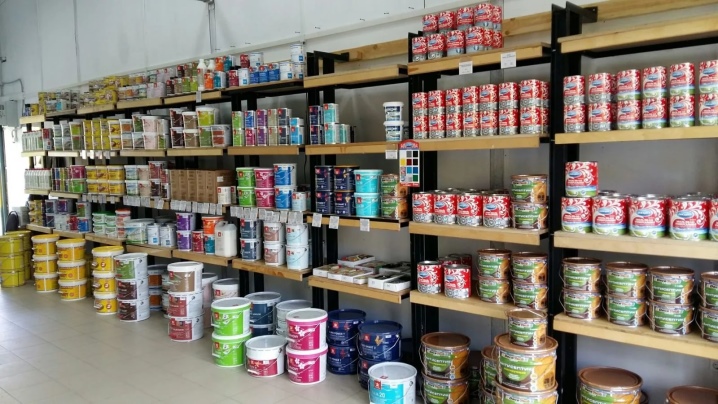
Fire retardants
The lining that is installed in the inside of the country house can be located in the immediate vicinity of heating systems, heating devices. In this case, it is important to properly protect the wood trim from possible ignition. For this, special flame retardant impregnations are ideal. When applied on their own, they may not be the most "malleable".
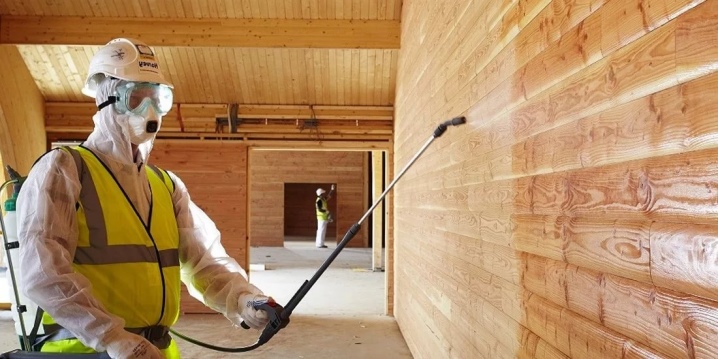
It is easier to purchase such a lining for a summer residence, which is initially impregnated with the compositions in question. In rooms where there is a moisture concentration of no more than 70%, it is allowed to process the material with solutions of moderate stability. In the conditions of the interior of the dwelling, such compositions will last for a long time and are cheaper than weather-resistant options.
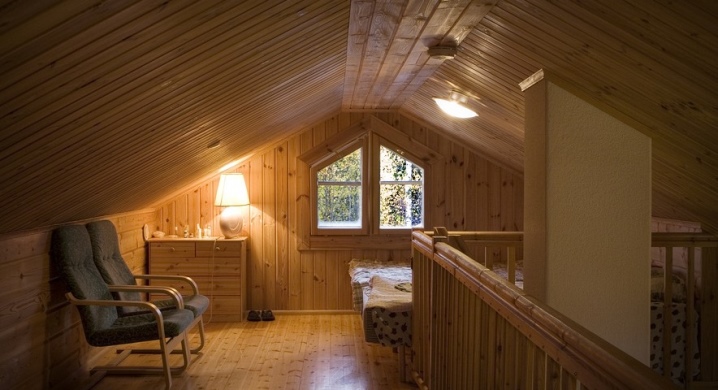
Antiseptic compounds
A serious risk factor for any wood is exposure to dangerous microorganisms. You can forget about this common problem if you turn to suitable antiseptic agents. Special antimicrobial compounds, which are ideal for impregnating wood with them, easily deal with biological contamination, prevent the appearance of fresh foci of decay and mold.
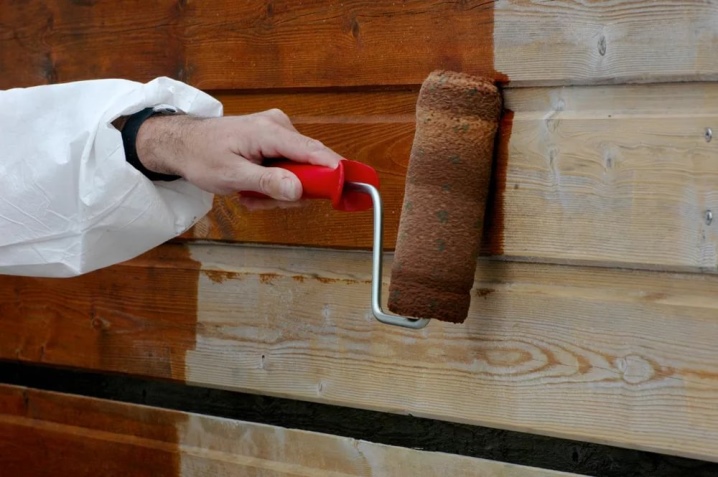
Antiseptic compounds often have a characteristic pungent odor that does not fade for a long time. You should pay attention to this feature of these impregnations when choosing a suitable antiseptic for the lining.
Preparations that have a higher cost can not only protect the lining from microorganisms dangerous for it, but can also make the material more aesthetic and attractive at the same time.
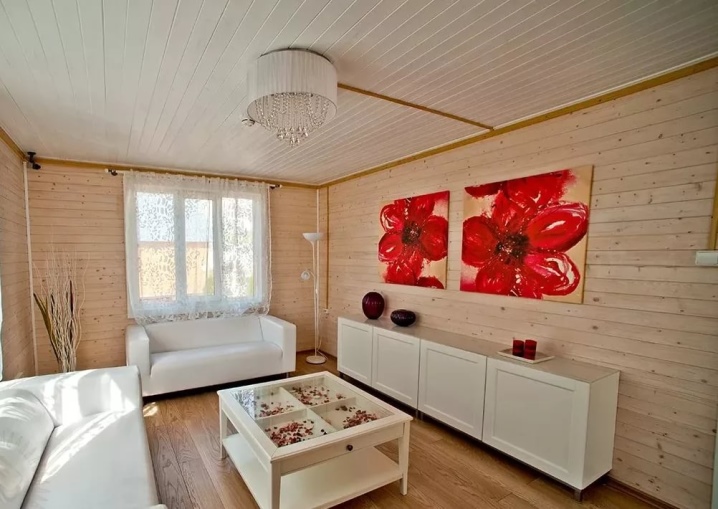
Stains
They are specialized liquids based on water or organic solvents that can penetrate into the very depths of the tree, while creating a certain color shade. Stains are also called "stain" - this is a foreign term. The products in question are not intended to protect the carriage. They can only tint it, although more functional products with a noticeable protective effect can be found on sale, but they are also more expensive.
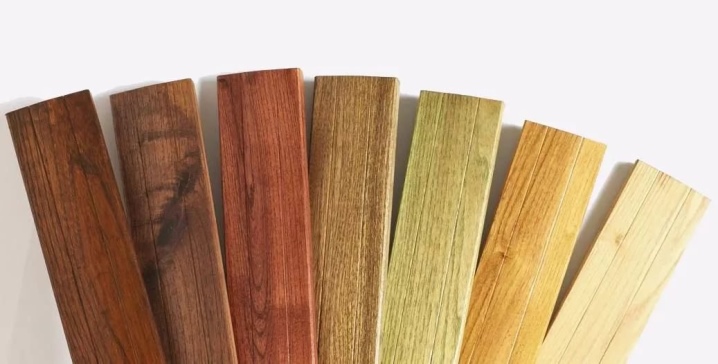
Often, dark spots appear on wooden boards, the formation of which is not always clear. It is permissible to treat such areas with bleach, but for this it is necessary to correctly select the concentration and exposure period. It is worth testing the composition on lining waste to see how the material behaves and changes.

Lucky
They are characterized by an excellent protective effect on wood. They are allowed to be used for coating the lining in a private or country house. These same compounds are also used to give finishes a more attractive appearance. Lacquer solutions based on acrylic can decorate the surface of the lining, as well as form a special barrier on it.
The special aqualak has a minimal level of allergenicity.
It can be safely used for the purpose of processing wood inside the building. This composition dries longer than organic liquids, but it is safer for the health of households. With the help of an aqualak, it will be possible to create either completely or a slightly matte, glossy surface of the cladding.
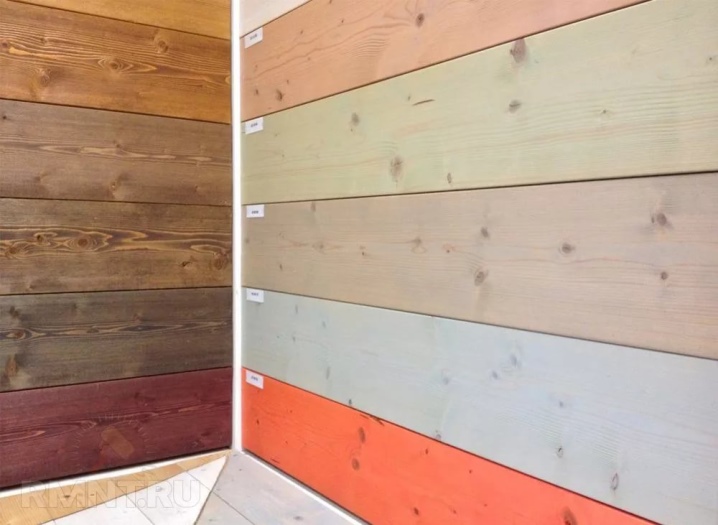
If you add the color you like to the solution in question, the result will be a coloring agent of a certain shade. From the outside, such a composition on the cladding will not be able to hold out for a long time, therefore it is not recommended to use it for street application. Water based varnishes form a vapor barrier.
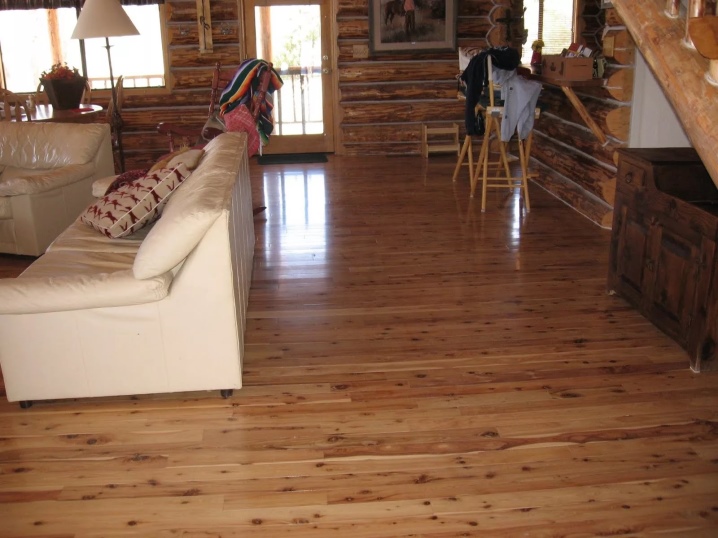
In other lacquer compositions, components are introduced that are designed to protect the base material from exposure to ultraviolet rays. With such options, it makes sense to process surfaces that are exposed to the sun for most of the day. Alkyd varnish composition is distinguished by good durability. After drying, the coating from it can stay on the material for more than 10 years. Often inside a country house made of wood, it is advised to process the floorboard with similar means. Fans of interesting color schemes apply alkyd solutions to the walls in the home.
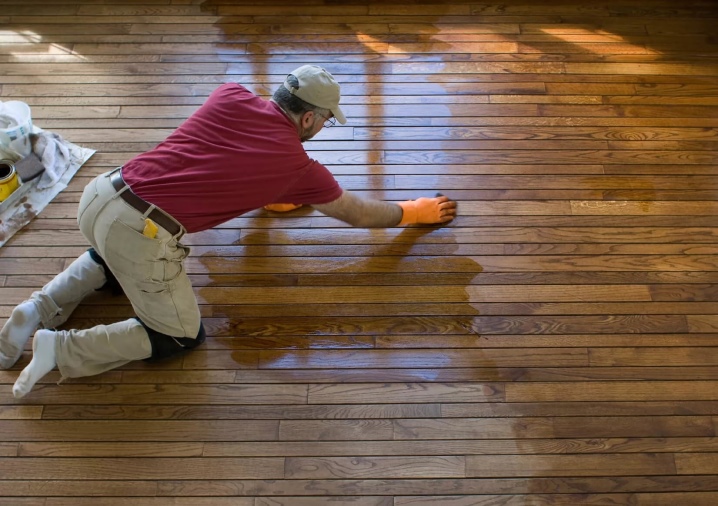
Paints
To process the interior wood cladding in a country house, you can use a variety of coloring mixtures for wood. Oil paints turn out to be "veterans" in operation. They are presented in different colors and shades.
On a dry base, such coatings can last for about 7 years. As soon as this period comes to an end, the layer may discolor or even peel off.
In this case, the painting will have to be repeated. To improve the fixation of certain pigments on wood, it is advisable to resort to pretreatment with drying oil.
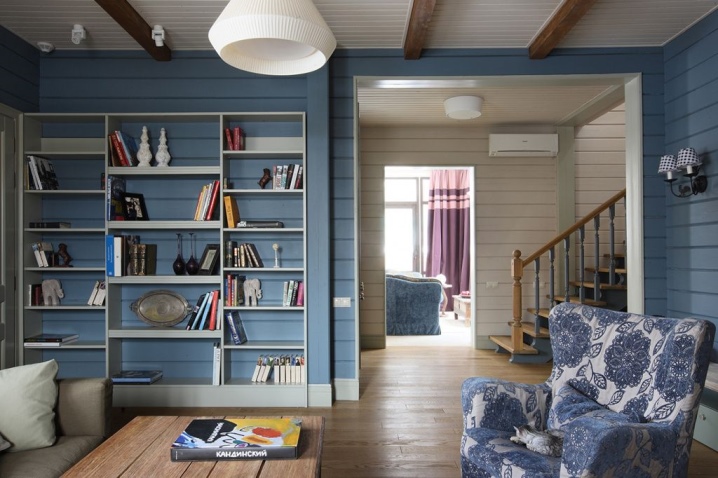
If there is a blockage of the pores of the wood, the microclimate in the home becomes worse. During the painting of the lining, there is a significant evaporation of the solvent component, which is characterized by a not very pleasant smell.
Vapors of organic matter can harm human health, therefore, painting should be resorted to only in summer and in conditions of open windows and doors.
Acrylate paints also have a specific smell. It is also necessary to paint the lining with them carefully, airing the room. In application, this paint turns out to be simpler and more malleable than oil formulations. It creates an elastic film on the base.
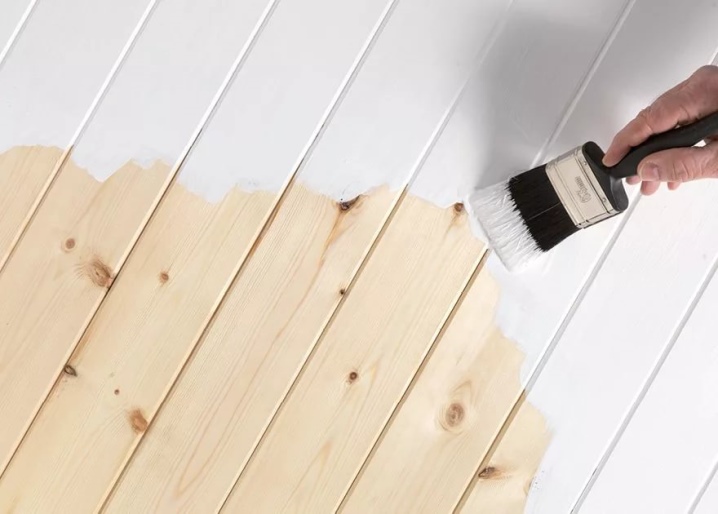
Oils and waxes
In addition to linseed oil, which is made from drying oils, the wood cladding is covered with other oil solutions, which are perfectly absorbed by the clapboard. Such compositions create either a matte or glossy surface on the wood. They need to be gently rubbed into the base, and then polished. Wax mixtures have the same chemical structure, the difference lies only in the substitution of ester glycerin for monohydric alcohol.
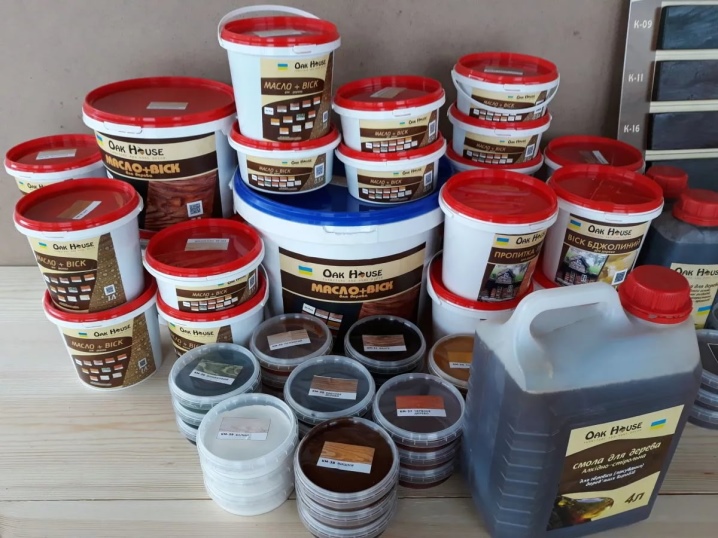
The waxes are characterized by high resistance. With their help, a perfectly flat surface with a pleasant shine can be formed on the surface of the lining.
Wax coatings are able to stay on wood for tens of years, if they do not experience significant stress.
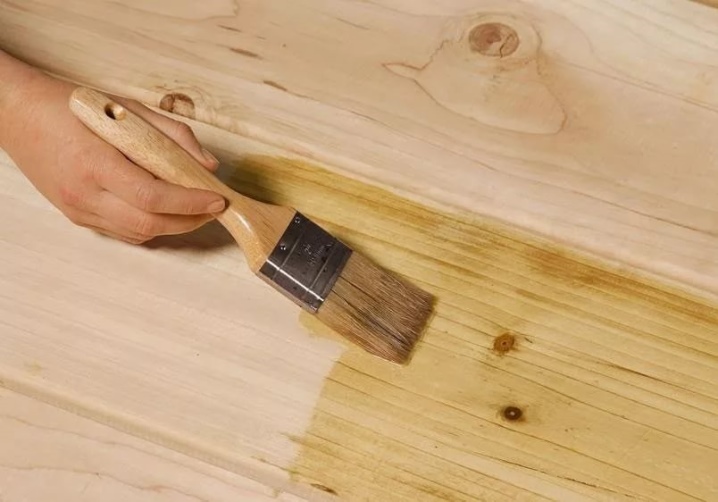
The wax glaze is sold ready for use. Hard types of wax will first need to be softened by melting under the influence of a water bath. So that the wax can be distributed over the lining evenly and efficiently, it is recommended to carefully prime the base beforehand. A good result can be obtained if the lining is treated with a combination of varnish and oils.
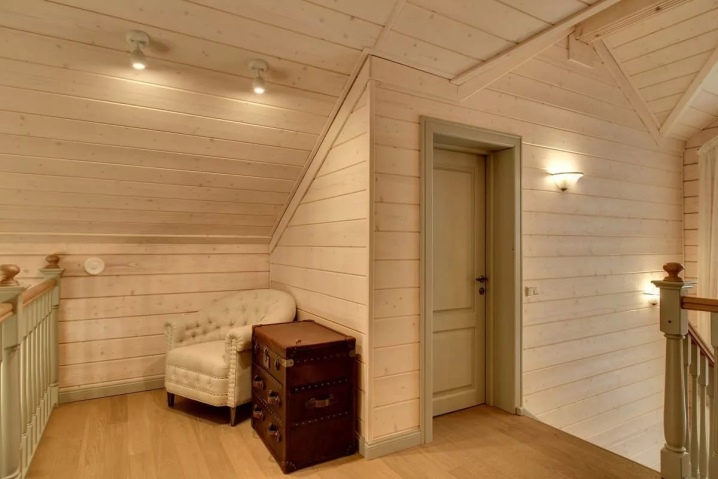
Features of applying impregnations
The lining is divided into several types. Different materials differ from each other in the number and structure of the joints. Based on these parameters, a different amount of effort is required for its high-quality preparation.
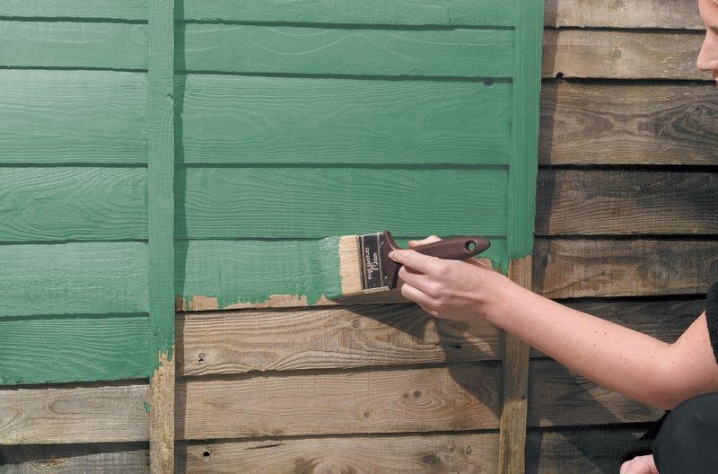
When performing work, you should adhere to certain rules.
- Before processing the lining with any of the permissible compositions, it is necessary to carefully examine all the boards. If they have dark spots, you will have to resort to local lightening with bleach.
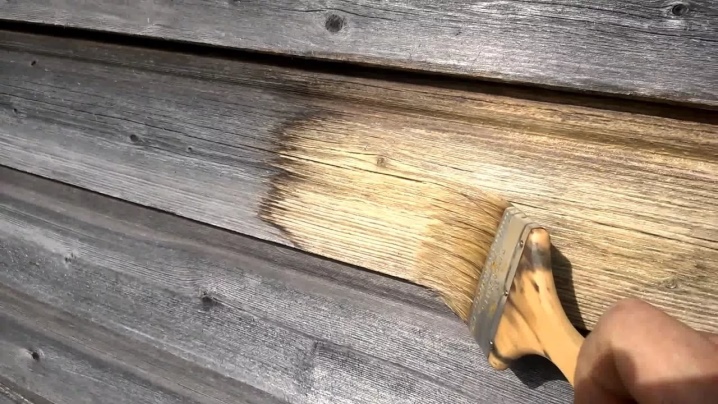
- Next, the entire surface will need to be rinsed a little using a diluted soda solution. You will need to wait until the water has completely evaporated. Only after that, you can start treating the lining with soil and the main solution, or immediately impregnation.
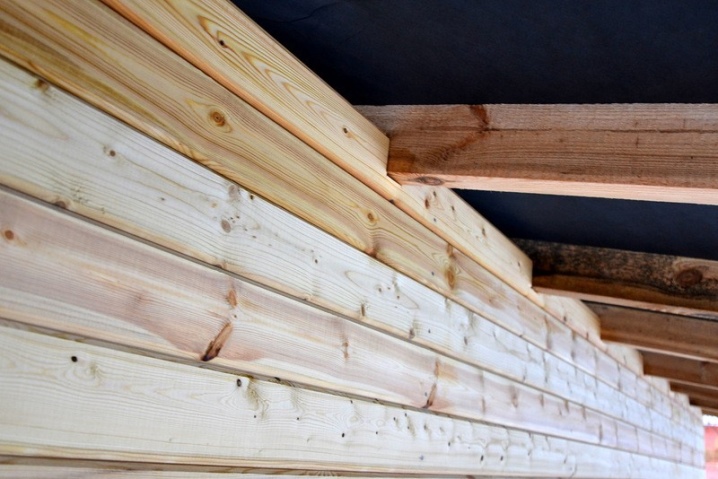
- Cracks must be closed with putty. Surfaces will require sanding.
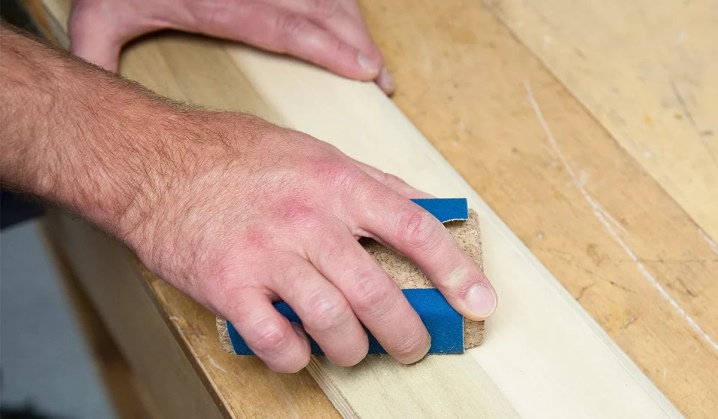
- In order for the decorative layer to be fixed better, the lining can be primed. The soil must be especially carefully distributed along the seams. You can use a handy spray gun to apply the selected primer mixture to the main part of the finishing material, but in places where there are joints, it is best to work with a brush only.

In the next video, you will learn how to quickly and easily paint the lining white.













The comment was sent successfully.